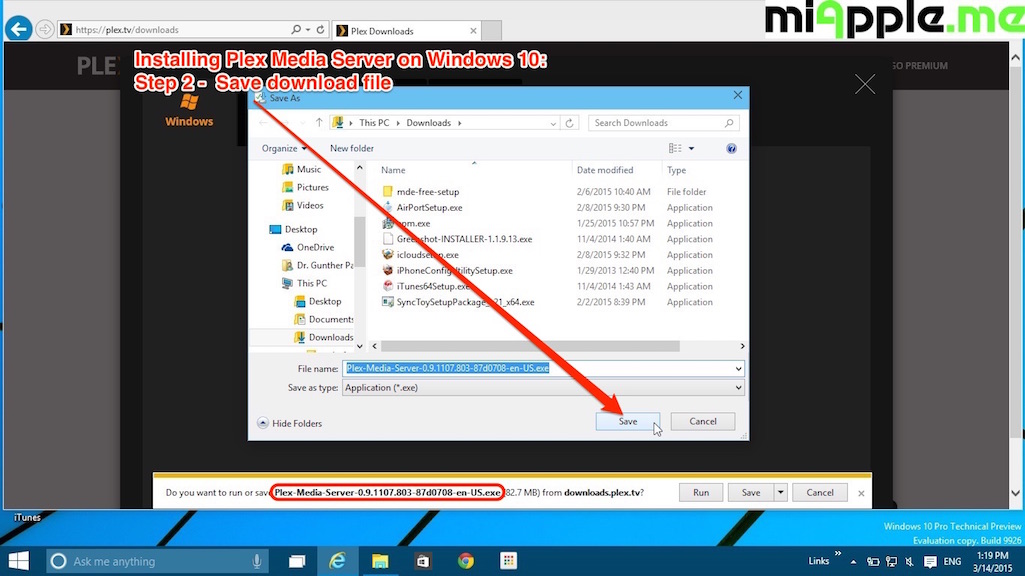Media Server Windows 10 Download
Almost every device you connect to your TV (e.g., Xbox One, PlayStation 4, Roku, Chromecast, or an Apple TV) includes DLNA support to stream media over the network. That’s of course, as long as you also configure the device storing the content as a DLNA server.
DLNA stands for “Digital Living Network Alliance”, and it’s simply a set of guidelines that makes it easy to set up a device to stream videos, photos, and music with other DLNA supported devices on the network.
A collection of media servers programs for Windows 7, Windows 8 and Windows 10 along with software reviews and downloads for 32-bit and 64-bit titles. The Free Software Media System. Jellyfin is the volunteer-built media solution that puts you in control of your media. Stream to any device from your own server, with no strings attached.
If you’re running Windows 10, similar to previous versions, you don’t need a third-party DLNA media server software to send media to other devices.
In this guide, you’ll learn the steps to turn on the media streaming feature on Windows 10 to send your music, pictures, and videos other devices in your network.
Click here to Download the Plex media server for Windows, Mac, Linux FreeBSD and more free today. PLEX Media Server (Freemium, not opensource) We already have a done couple of articles on Plex. PS3 Media Server on 32-bit and 64-bit PCs. This download is licensed as freeware for the Windows (32-bit and 64-bit) operating system on a laptop or desktop PC from media servers without restrictions. PS3 Media Server 1.90.1 is available to all software users as a free download for Windows 10 PCs but also without a hitch on Windows 7 and Windows 8.
How to enable media streaming on Windows 10
On Windows 10, Microsoft hasn’t migrated its DLNA-compliant feature to the Settings app, as such you’ll need to use Control Panel.
To turn on media streaming, do the following:
Open Start.
Search for “Media Streaming Options” and click the result to open Control Panel on that section.
Click the Turn on media streaming button to enable DLNA on Windows 10.
Click OK to apply the settings and complete the task.
You’ll also notice that after turning on media streaming, you have a number of available options, including the ability to enter a custom name for your library to identify the content being accessed.
“Show devices on” is set by default to “Local Network”, which you don’t want to modify unless there is a good reason.
Universal Media Server Download Windows 10
Then you’ll also see a list of the DLNA-enabled devices currently on the network with access to your content. However, you can always uncheck the Allowed option to block the device.
Keep in mind that content won’t be available to other device, when your PC is sleeping. If you want to change this behaviour, you need to click the “Choose power options” link and configure your PC to stay awake.
Once you completed the steps, your account libraries (Music, Pictures, and Videos) will automatically become available to any streaming device to access your media.
There are a number of other options, but for the most part you won’t need to configure anything else, as all the default settings are good enough.
How to access DLNA media from another device
Streaming media to another device is a very straightforward process, but it will depend on the device you’re using.
If you’re using an Xbox One, you can open the Media Player app, wait a few moments until you see the name of your library popping up. Then simply browse and play your pictures, musics, and videos as needed — just to name an example.
Wrapping things up

Although Windows 10 doesn’t include any DLNA references for its media streaming feature, it actually meets all the requirements to be a DLNA media server.
It’s also worth pointing out that even though most of the time you won’t have any issues streaming content, every device has its limitation on supported content. Always make sure to check your device manufacturer’s support website for file formats and supported codecs.
Enable Media Streaming Windows 10
While this guide is mainly focus on Windows 10, you can enable media streaming on Windows 8.1 and Windows 7, too.